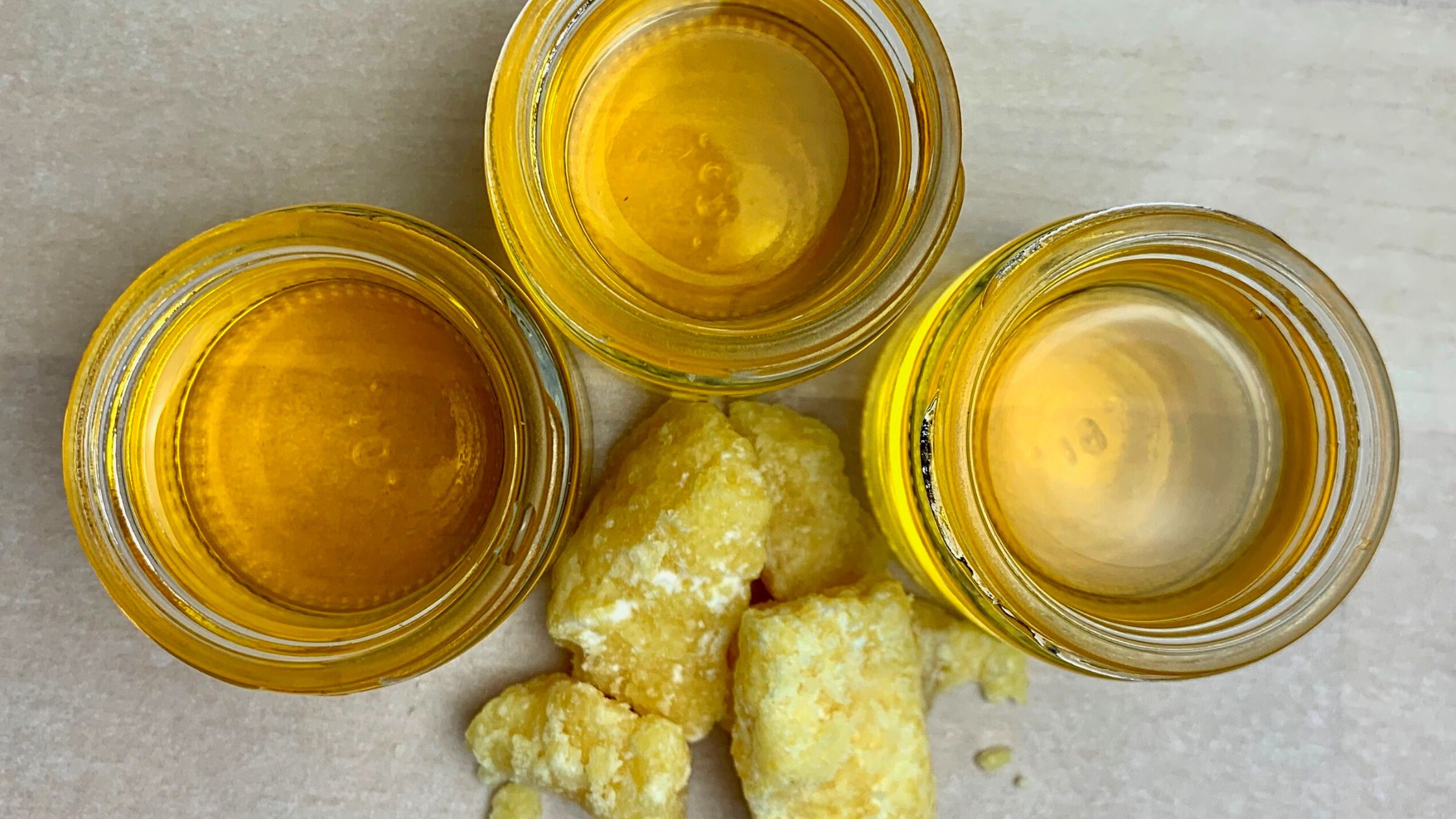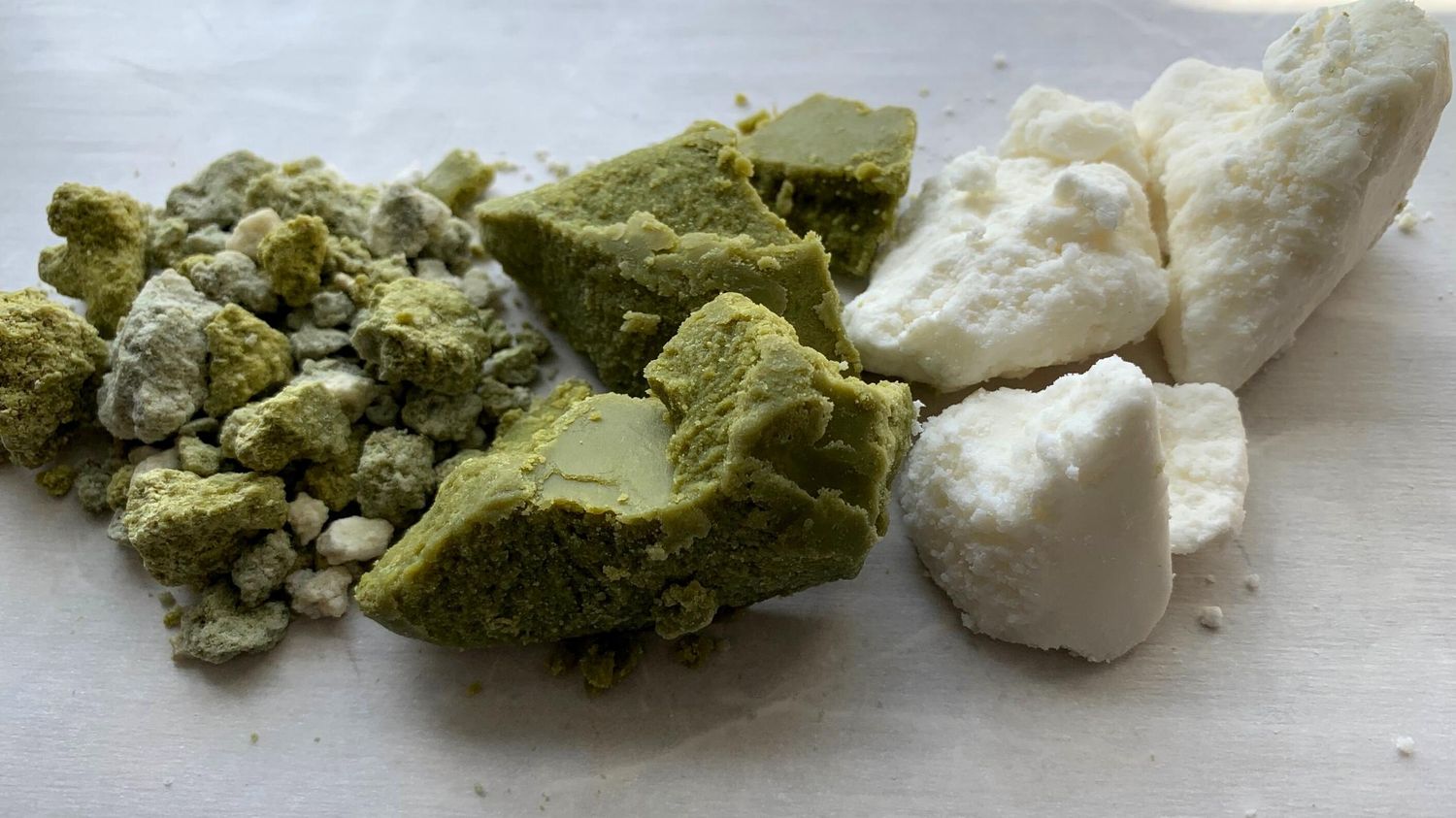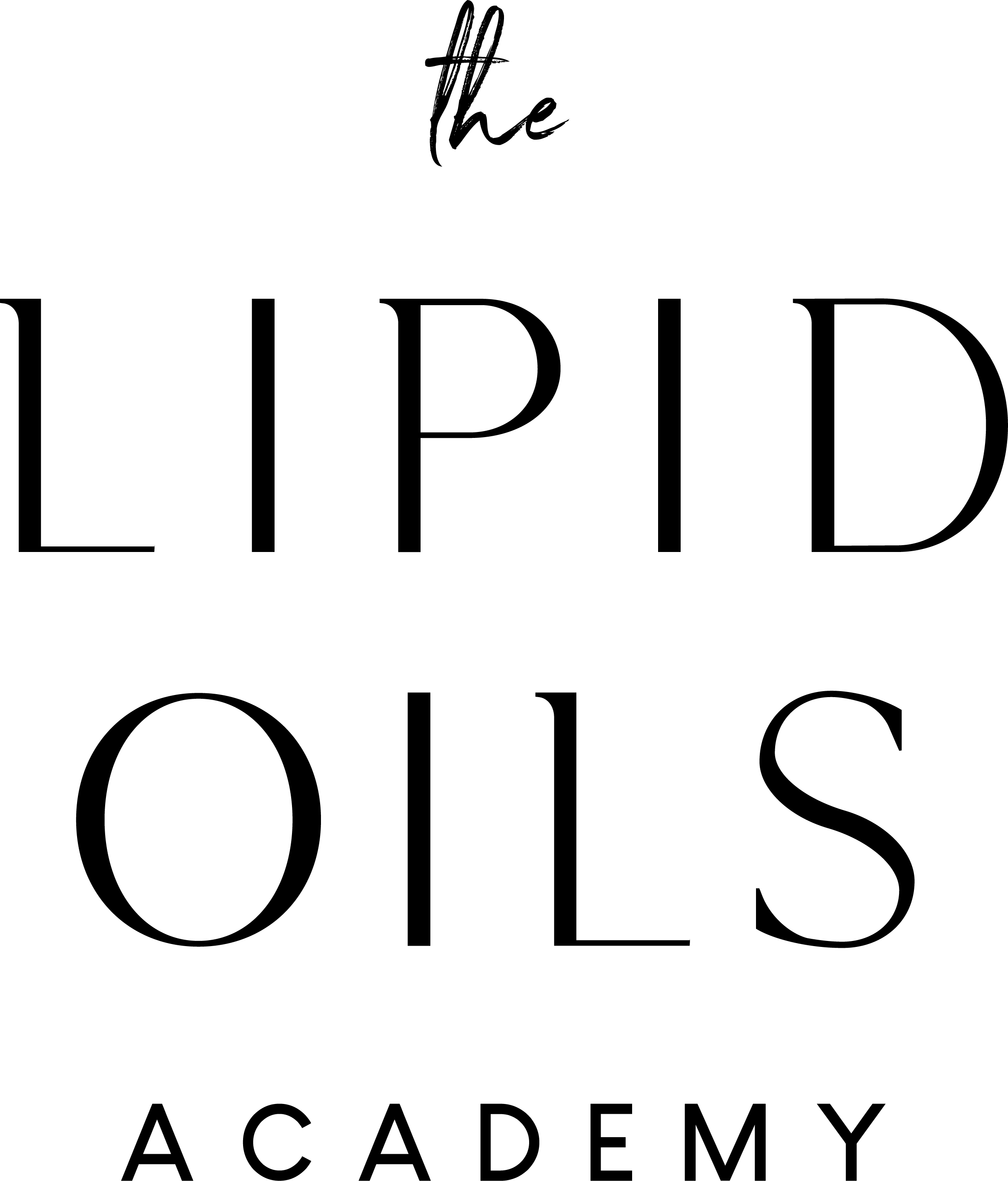With winter fully here, I’ve been working on a recipe for a dry hand balm, something to nourish and protect the skin without leaving an oily residue behind.
I do love my oils.
But,
I also work on the computer for a good part of the day and it’s already a bit of an oily mess.
So, my objective with this recipe is to create a hand balm that feels light on the skin, while also being moisturizing and protective.
First, what is a ‘dry’ oil?
Some oils are undeniably oily, but others have enough tannins and other astringent plant compounds that they have a dry quality on the skin.
These dry oils and butters coat the skin with a thin film of lipids that allows you to continue about your work on computer, paper or other oil-sensitive materials.

Here is Murumuru butter melted and in its solid state
The dry butters
In my research for this project, I was focused on finding dry butters – saturated oils that are thick and solid at room temperature – and here is a list of six that I came up with.
Babassu
Kpangnan
Murumuru
Uccuba
Also
Sal butter
Cupuaçu

Above is an unrefined and a refine sal butter
The experement
I’ve split them up into two groups.
During my experiments, I found that the first group didn’t go gritty once the balm cooled.
With formulating skill the Sal butter could make an exceptional dry balm but it would take expertise and technique to get it to cool without going gritty.
Cupuaçu didn’t become objectionably gritty but I did find some evidence of roughness a few days after it cooled.
Cupuaçu, however, might be worth adding anyway. This is an interesting and unique butter that is often called “vegan lanolin”. Cupuaçu butter can absorb four times its weight in water, making it an exceptional protective lipid for the skin.

Cupuaçu butter, above, is often called "vegan lanolin" for its ability to hold moisture.
I’ve gone through a few different combinations and this is what I have found developed so far:
I have made a successful balm using equal parts Babassu, Kpangnan, Murumuru, and Uccuba butters.
I used these four butters alone without a wax to help solidify them. Because they are all saturated butters, the balm cooled solid.
This combination came out fairly solid but using just a bit on the back of a fingernail, worked into the hands felt nourishing and moisturizing without being too heavy.
To lighten it, you could add a fifth equal part of a liquid oil like camellia or hazelnut. Both these oils are considered “dry” oils so adding either one would soften the balm without making it oily.
Dry Balm Recipe
1 Part Babassu
1 Part Kpangnan
1 Part Murumuru
1 Part Uccuba
Optional add:
1 Part Camellia seed oil or hazelnut seed oil
Method
Melt together the four butters over low heat. I always use a cast iron saucepan as I find it distributes the heat most evenly.
Once all four butters are liquid, add the camellia seed oil or hazelnut seed oil and mix then remove the pan from the heat.
It’s always best practice to heat oils and butters as little as possible, just enough to bring them to a liquid mixable state.
Have your jars or tins ready, pour and set aside to cool before putting lids on and storing. Tip: When working with butters without waxes they set better when cooled quickly in the refrigerator.
Have you worked with these “dry” butters yet? I’d love to hear about your experience and experiments in the comments below.

Susan, I have been making a mature face butter with Sal Butter and using emulsifying wax took the grittiness out of the final product. My friends who I make it for have stated butter is better. I did not know Sal was a dry oil but I love it and it absorbs into the skin so well. I also use some Kpangnan too. I look forward to trying your recipe. If I wanted to make it for the face what liquid oil would you recommend.
Thank you very much Susan for your work and knowledge
Thanks for this! I have had trouble finding unrefined Babassu and Murumuru butters… one was organic but had been through a bleaching process… doesn’t sound good:(
Can you advise, and do you know what the “bleaching” process entails?
Appreciate your dedication and passion.
All oils go through various processes on the way to market. The bleaching of oils involves heat and filtering through clay to remove color particles while steam is used to deodorize oils of scents.There is a wide difference between a just pressed crude oil and one that is ready for market. We want some processing so finding a good producer and supplier is worth the search.
This looks really interesting. Thank you so much for sharing.
Hi Susan
Your posts are always interesting and lots of practical detail which is great. I’m a beekeeper and like to include beeswax where I can. If I wanted to include a small amount of beeswax should I substitute it for half the butters and half the oils to keep the consistency?
Diane, Beeswax will make a very hard balm if you substitute it for half the butters – rather if you replace the ucuuba butter with beeswax it should be close as that is very hard butter. How nice to have your own bees and the wax.
Dry balms would be ideal. I recently purchased avocado butter to create a balm for dry skin. Given tge limited choice of butters here by me and sensitivities to Shea, mango and Coco I was planning to use arrow root powder so it wouldn’t be too greasy. However, would it help if I used dry oils instead to balance any greasiness? Thanks
I’ve done the same. I really don’t like the consistency once I add Arrowroot, so seeing this post was really interesting.
Hi Susan, I love the idea of creating a ‘dry’ cream – i end up having to write with pencil if my hand lingers over the notepad too much with normal handcream applied!. Thank you for the inspiration here, and insight into the different butters, I need to expand my skincare ‘larder’. You mention the graininess of some. I typically use basic shea butter when I’m blending with oils, with that I have to keep stirring throughout the cooling process to avoid graininess. I believe this is because the different oils and butters have different melting points so need to be continually combined as they cool to minimise graininess. Wondered if you’ve experimented with this at all?
Hi Susan, I have not had any experience with the above listed, mostly mango butter. My question is before I do , I live in North Queensland, Australia and it gets hot so without a wax would these hold their balm formation?
Hi Susan, thanks for sharing.
Does it need to go in a container, could this sit free like a bar of soap?
yes – it has no wax so would not be stiff enough.
25% of each oil ?
yep
Hi Susan, I’m confused with your statement:
“…Cupuaçu butter can absorb four times its weight in water…”
I don’t understand how come if capacity butter is an oil/fat, therefore is it not hydrophobic?
Am I misunderstanding something here?
Cupuaçu butter is considered the vegan lanolin and is compatible with helping maintain moisture in the skin.
Hi Aneta, you are correct. Cupuacu butter is a lipid and therefore hydrophobic by nature. The article that states that this butter can hold four times it’s weight in water actually means that mixed with water it took much longer for this butter to separate from the water than any other butters or oils. Four times the water bonded to the butter molecules for a longer period of time before separation without any additional emulsifiers. This is likely due to the butter”s HLB numbers.
Cupuacu butter has a very high affinity for water and works well in water containing products almost as a co-emulsifier or at least alongside a reliable emulsifier.
It is often compared to lanolin and would work with the water that is already contained in the skin to prevent TEWL.
Cupuaçu is a great butter/lipid I’d recommend exploring if you haven’t already. I’ve made facial emulsions/serums with it that appeared to be great for preventing TEWL – worked great on aging dry skin and had a light protective barrier almost – but was still light feeling. Plus, a restorative body butter for after-sun exposure. But as Susan says above, it did make my body butter a bit “rougher” yet once warmed in my palms the other oils smoothed it out.
Know I’m not answering your question as they do below. I’m just a fan of Cupuaçu!
Good Afternoon, Susan. I am amazed at how much educational material you include in your posts! I think this is going to be on my “Must Do” list for the new year. Thank you, Susan. Have a merry and Blessed Christmas.
i love this thank you